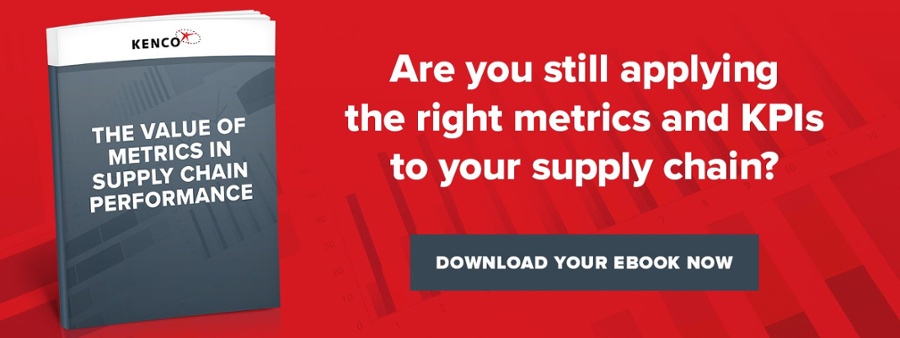
Years ago, business decisions were made primarily with "gut feelings" or observations drawn directly from narrow personal experience — essentially, if there wasn't a general store in town, opening a general store was considered a good idea. When businesses faced little competition or obstacles, this method was successful enough to keep the doors open.
As businesses prospered, however, the successful businesses were the ones that took notice, stocking up on provisions when they anticipated demand, and cutting orders to save capital in the lean times. Their rivals, which had previously relied only on momentum and habit, fell into their shadow and eventually closed up shop.
This cycle has played out throughout business history, as successful businesses prosper by relying on data. Is your business stuck in the "Wild West," stumbling over data-free decision making?
Overcoming Bad Habits Through Data
It's been said by gurus from all facets of business that one of the most damaging phrases for innovation and improvement is, "That's the way we've always done it."
For example, Kenco partnered with a company that routinely used 170 forklifts across their manufacturing plants. This seemed like an outsized amount, given the given the age, usage, and normal maintenance associated with the units, so Kenco and the customer analyzed the data. The result? The data showed that the company could comfortably get by with a little more than half that amount—90 forklifts. Even in the face of these findings, the company hesitated to cut back. A compromise was struck, and the company settled on 100 forklifts with an additional 30 on retainer, ready to head into service in 24 hours if they were needed. The company never tapped into this spare bank of 30 forklifts. Ultimately, that meant 70 fewer machines to purchase, track, maintain, and account for at the end of the workday, leaving effort, time, and resources for investment elsewhere on the floor.
Data is important because it leads to success stories like these, but it can't work if you aren't gathering it. Keeping track of your data is crucial for turning it into an effective tool, and even the barest of data recording can become an unwitting—and fortunate— "canary in a coal mine" for potential systemwide problems.
Not All Data is Equal: Determine Your KPIs
Ultimately, the best data for your operation is the numbers that pertain to your most important processes in the warehouse. Instead of going with typical KPIs, walk around and talk to your warehouse managers. Consider questions like these when narrowing down your KPI targets:
- Where are your pick/pack team members getting bogged down as they work the floor? Speed of order completion could hint at bottlenecks to be corrected.
- Do associates know the standards for their processes and are they developed to meet those standards? Involving workers in standard creation and communicating accurate expectations out leads to buy in, and a philosophy of coaching/mentoring along with measurement leads to improvement.
- How far are team members traveling to reach distant bins between SKUs? Layout and product placement can have a huge positive or negative impact on pick speed—you may find your items need re-slotting.
- How accurate are pick orders? Inconsistencies lead to supply chain breakdowns and unhappy customers—if there's a recurring issue, you need to know about it to stop it.
- Are staffing levels adequate for peak times, or do teams struggle to meet completion goals? Scheduling may need adjustments to meet your business needs properly.
Who Controls Your Data?
 While future technology may allow business owners to press a button to collect data automatically, human interaction is still needed in modern business. You'll need to designate a trusted employee, preferably a member of your management team, to collect, examine, and approve data streams from your operation workflows. Even if they simply act as the human go-between to review automated reports, they're still an important part of turning raw data into an actionable business improvement tool.
While future technology may allow business owners to press a button to collect data automatically, human interaction is still needed in modern business. You'll need to designate a trusted employee, preferably a member of your management team, to collect, examine, and approve data streams from your operation workflows. Even if they simply act as the human go-between to review automated reports, they're still an important part of turning raw data into an actionable business improvement tool.
This data manager or managers should:
- Determine the company baseline for productivity in selected KPIs, as well as manageable improvement goals.
- Feel comfortable discussing potential improvement plans, both with the floor staff and C-suite.
- Review data on a regular basis, which means, potentially:
- Hourly for productivity goals—how are individual employees doing, is the shift meeting efficiency goals, and so on.
- Daily for trend-watching and team member feedback—if there's a missed goal with individual performance, this allows for a process observation to determine what is leading to the missed goal.
- Weekly for financial assessments and order planning—ordering more product than the team can handle only exacerbates an existing issue, driving productivity down.
- Monthly to watch for creeping errors and looming issues—high turnover among warehouse floor teams, or high rates of breakage/loss.
Can Software Assist with Data-Driven Decisions?
No one program can "save" a warehouse that's determined to listen to its gut instead of its data. That said, if a business is genuinely ready to make a change for the better, they'll be pleasantly surprised to discover how helpful their existing WMS can be. Familiar programs like JDA, WML, and TZA are all utilized by Kenco to help discover data like optimal pull times for moving product into buildings and comparisons against set labor standards.
Explore the capability of the programs you already have in place or consult with your 3PL to determine if you can "piggyback" on their technology, rather than taking on the added cost of revamping your own.
Business intelligence software like QLIK also has the edge over that old familiar standby—Microsoft Excel—because it delivers drill down capabilities rather than raw data. In order to take advantage of insights, you need to find them in the first place, which is difficult when staring down a row of number-filled cells. The ability to slice, dice, and examine periods with an outsized amount of growth or shrinkage out of the warehouse will help you get behind the causes, enabling you to drive them towards or away from history repeating itself.
To Sum It Up
If you want to find, record, and use the data your warehouse is producing even faster than your pick orders, there's never been a better time to start. Contact Kenco today to make a commitment to a more efficient, data-driven warehouse—one that will give you a leg up on the competition for good. Click here to find out how you can add value, opportunity, and versatility into your supply chain, and ultimately, your warehouse data too.



